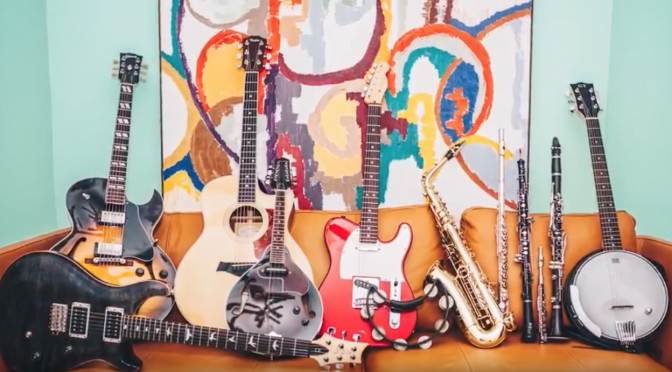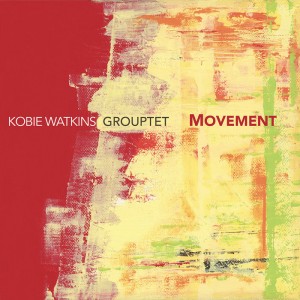More than two years have passed since I presented an album of the Daniel Bennett Group. The group comes back this September not with mysteries or confusion but with pure music. “We Are The Orchestra” is the name of the latest album that has been released on September 7.
Daniel Bennett prefers to play in small ensembles, he goes on tour only with drums and guitar. For this album he reduced the number of musicians down to two. He and Mark Cocheo recorded all of the wind, string and percussion instruments with the goal to create the sound of a large ensemble.
The line-up looks as follows:
- Daniel Bennett: Alto Sax, Tenor Sax, Flute, Piccolo, Clarinet, Oboe, Piano, Percussion
- Mark Cocheo: Electric Guitar, Banjo, Acoustic Guitar, Nylon-String Guitar
The collaboration between these two musicians started when Bennett arranged the musical score for “Whitman at the Whitney” at the Whitney Museum in New York City. The show featured Daniel Bennett on saxophone and Mark Cocheo on banjo playing famous opera excerpts from the 19th and 20th century.
The official promotion video explains that in detail:
The album contains eight songs with a total playtime of 29 minutes and features six originals by Daniel Bennett and two opera themes by 19th century composer Giuseppe Verdi.
The album starts with the song “Loose Fitting Spare Tire”, a typical Daniel Bennett composition that modulates heavily. The banjo and the western guitar define the folk sound of this tune. Solo instruments are an electric guitar and saxophone.
“I’m Not Nancy” follows this pattern, a catchy melody based on harmonies with multiple tonal centers. Flute and banjo are the solo instruments and the band sounds this time like a bluegrass combo.
The third song “Gold Star Mufflers” is another Daniel Bennett-original. The piano background gives this song it’s character and the minor chords moving in major thirds create that special “mystery” sound of this song.
The album continues with the “Theme From Ernani”, the first opera theme on this album. The pulse of the song comes from the banjo rhythm, Mark Cocheo plays a great guitar solo (I guess on his telecaster), the flute adds nice fills and someone had fun with the percussions especially with the vibra-slap.
We come to my personal favorite on the album. It’s a composition by Daniel Bennett again and is called “Refinancing For Elephants”. This song has a beautiful contemplative feeling, with the clarinet and the piccolo playing the melody and guitar and tambourin laying the background.
“Inside Our Pizza Oven” goes all the way to Marrakech, a song that reminds me of the atmosphere of the ‘Djemaa el Fna’-marketplace. Daniel plays the oboe and percussion and Mark adds a strumming guitar.
The next tune is the second composition by Guiseppe Verdi on the album. This title is called “Theme From Il Trovatore” and the Daniel Bennett Group interprets this waltz straight even a little bit cheesy, especially when two saxophones play the melody together at 1:30, but it fits perfectly for this song.
The album closes with “Carl Finds His Way”, again a typical Daniel Bennett-composition with moving tonal centers. Mark plays his guitar solo with a distortion effect, so this songs sounds much more like a pop song. Mark and Daniel again have a chance to show their virtuosity and the song ends with a dialog between guitar and saxophone.
The album is quite an eclectic collection of musical elements from folk, classic and jazz music and shows the versatility and the mastery of these two musicians. They have been able to create a full and well-balanced sound. The Daniel Bennett Group has clearly found it’s style and the success of their unique musical approach proves them right.
More information about the Daniel Bennett Group can be found on their website:
https://danielbennettgroup.com
And finally a playlist on Spotify:



